Why Does Your Dolby Vision Look Yellow? Solutions Revealed
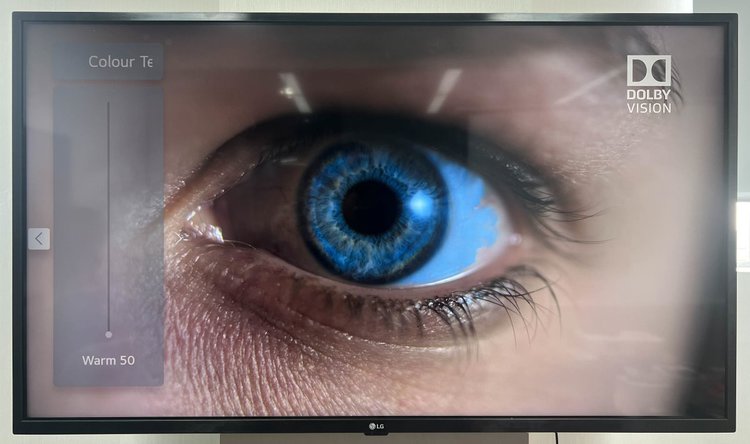
- Dolby Vision-enabled TVs have a warmer color temperature by default which might appear reddish or yellowish, but this is the intended viewing experience by content creators.
- To adjust the color temperature, settings may vary across TV brands, but they generally allow users to toggle between warm, neutral, and cool settings.
- Low-quality TVs or incorrectly calibrated displays might not reproduce Dolby Vision content accurately, resulting in visuals that look grainy or washed out.
Are you feeling annoyed by the yellowish hue in the Dolby Vision content on your TV?
Don’t fret.
In this article, I’ll help you understand the reasons and provide solutions for the yellow tint you’re experiencing with Dolby Vision.
Let’s dive in!
Quick Navigation
Why Does Your Dolby Vision Look Yellow?
The color temperature of Dolby Vision-enabled TVs is on the warmer side by default when playing DV content.
There’s nothing wrong with the warm setting. That is how movie producers or TV show makers want you to watch their content.
Initially, warm color temperatures will appear reddish. The colors will look more accurate after a few days or once you get used to the setting.
Set the color tone to cool after that, and the images will look bluish. But if the reddish or yellowish (brownish) warm tone is too apparent, adjust your TV’s color temperature to a slightly cooler or neutral setting.
Color temperature denotes an image’s white hue. Click here to learn more about how color temperature impacts your TV-watching experience.
How to Adjust Color Temperature on TVs?
The color temperature concept is relatively consistent across displays or TVs. However, the available settings or particular terminologies used to denote them could vary between brands.
The following are the steps to adjust some popular TV brands’ color temperatures.
LG TV
- Head to Settings and then All Settings.
- Go to Picture. Under Advanced Settings, choose Colour.
- Navigate to White Balance and then Colour Temperature to set the desired tone.
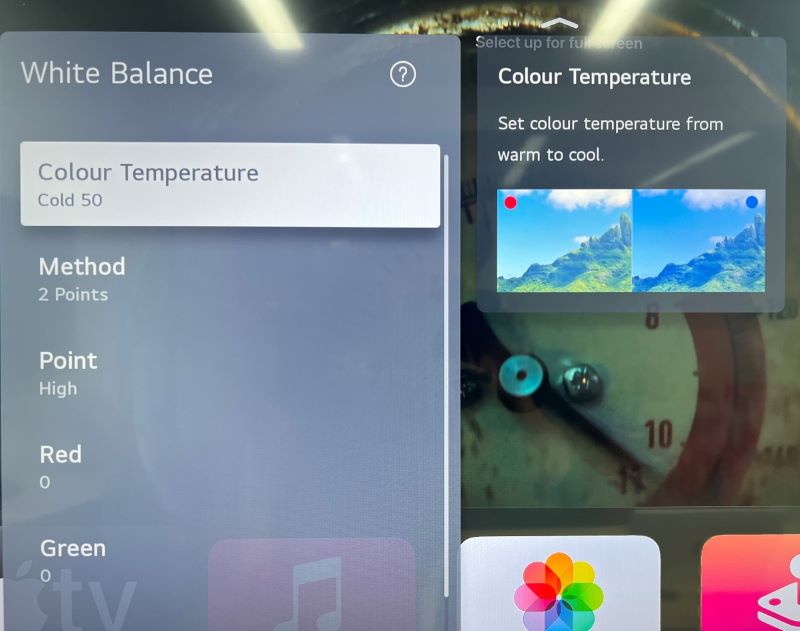
Samsung TV
- Head to Settings.
- Next, choose Picture and then Expert Settings.
- Navigate to Color Tone and choose from the available color setting options (Cool, Standard, Warm1, and Warm2).
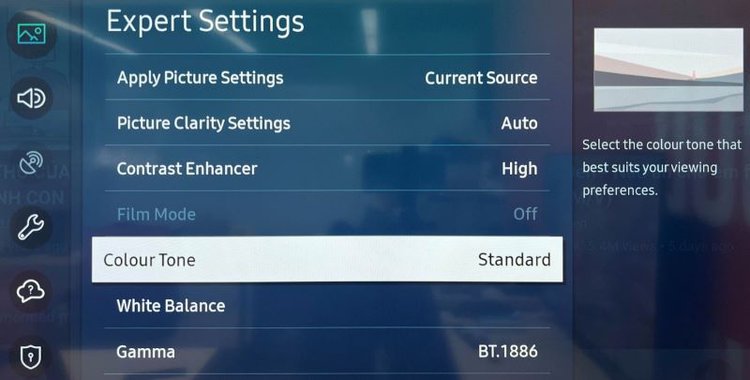
Note that Cool and Standard become available only after you set Picture Mode to Dynamic.
Sony TV
- Go to Settings.
- Choose Display & Sound and then Picture adjustments.
- Under Advanced, choose Color and then Color temperature.
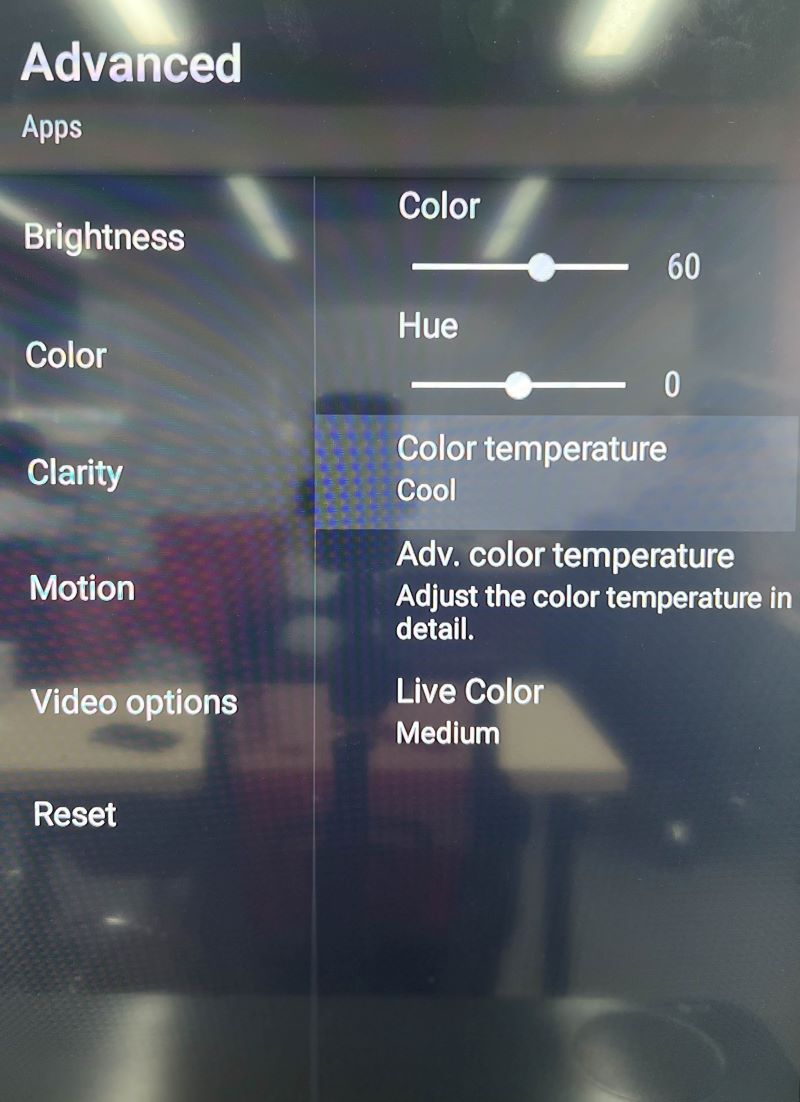
You can set the temperature to any of the preset options or adjust it in more detail under the Adv. color temperature option.
TCL TV
- Head to Settings.
- Choose Display & Sound and then Picture.
- Under Advanced Settings, choose Color.
- Head to Color Temperature and set the slider to Normal.
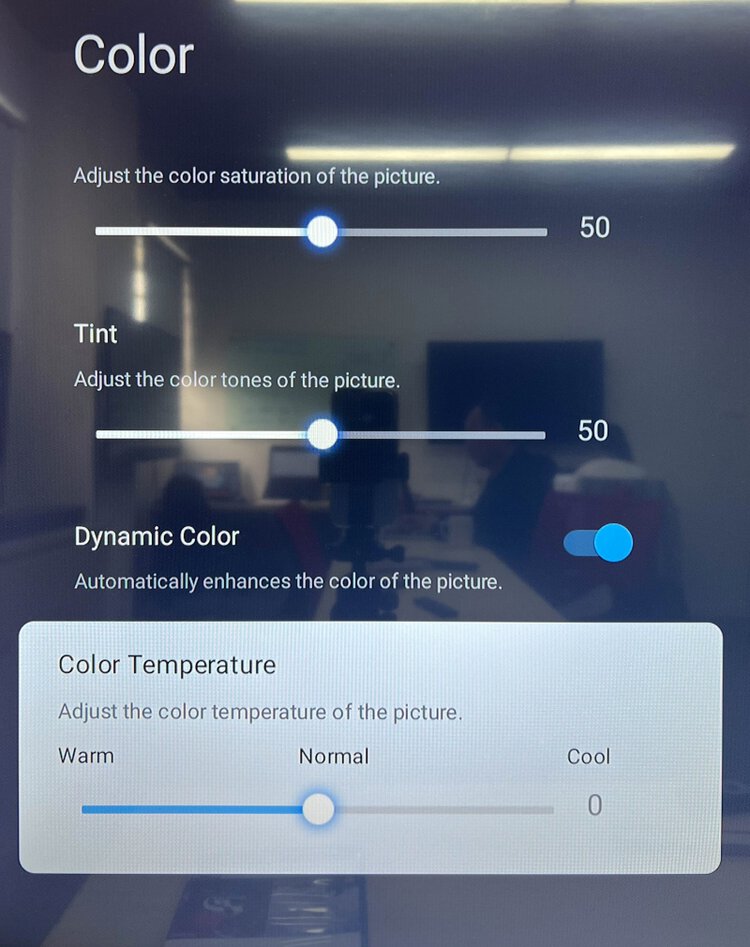
Bonus
Dolby Vision Looks Green-Purple Tint on Your TV
Playing DV content could produce a greenish or purplish cast on the images if your TV doesn’t support Dolby Vision natively.
There’s not much you could do here. Your best bet is not to play the Dolby Vision content or get a TV supporting the HDR tech.
If you are still determining whether the TV supports Dolby Vision, check its product manual or specifications online. Below are the specifications for my TCL Google TV on the TCL website, indicating the model supports Dolby Vision:
Most TVs with Dolby Vision support show a DV logo at the screen’s uppermost right or left corner when DV content is playing. Below is an example of my LG TV.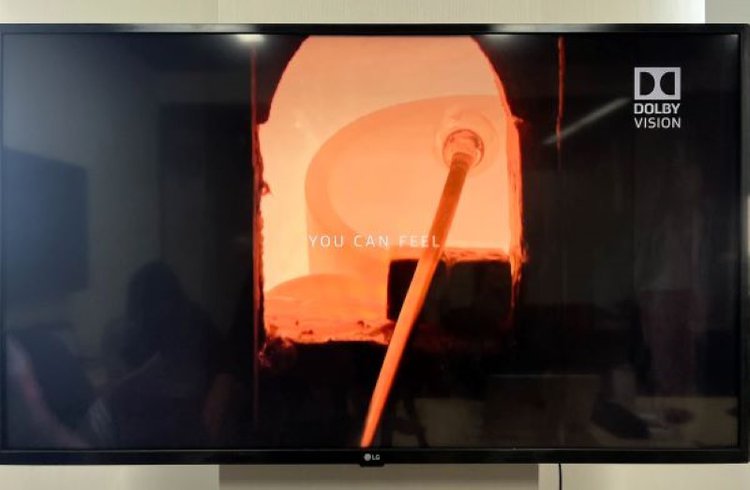
Why Does Dolby Vision Look Washed Out and Grainy?
Sometimes, Dolby Vision content on your TV could look grainy or washed out. It could be due to wrong picture settings, the TV display’s inherent constraints, or other things.
If the TV’s display is low-quality, it cannot reproduce Dolby Vision content accurately. Several Philips TV owners have complained about the issue before.
If you’re highly particular about the accuracy and consistency of Dolby Vision content playback, opt for TVs from more established manufacturers, such as LG, Samsung, and Sony.
TCL and a few other brands, including Philips, aren’t shabby by any stretch of the imagination. But it depends on the specific models or panel quality.
As a thumb rule, steer clear of budget Dolby Vision TVs if you care about the visuals. Even a low-budget Samsung or LG TV will likely not meet your expectations entirely. So, it’s not about the brand but the model itself.
The inexpensive price tag could be the reflection of some display-related compromises the maker may have made to justify the device’s retail price.
What compromises? Maybe the display was incorrectly calibrated, or the built-in picture settings aren’t Dolby Vision content-optimized. In other words, the panel may not be built to take full advantage of the enhanced contrast, brightness, and color range capabilities of Dolby Vision.
Bargain Dolby Vision TVs will likely have limited HDR capabilities, meaning non-conformance to DV playback’s desired quality standards. But those TVs are still advertised as “HDR-capable” because there’s no one HDR standard and no legal repercussions for not coming true on the claims.
Adjusting display attributes such as brightness, sharpness, and contrast could help boost the overall quality of the images and bring down the grainy or washed-out look. Watch this video to learn more:
Conclusion
There is no wrong or right color temperature setting on your TV. The desired color temperature preference may change based on the content and environment.
The different color tone options may produce different results or suit some eyes better.
If you’re used to watching cooler-tone visuals on your TV, suddenly shifting to a warm color temperature will be jarring at first and look faulty. But it shall look fine after some time and you may even start fancying it.
But if your eyes do not adjust to the yellowish or reddish color signature after a few days, try altering the color temperature slightly. Don’t make extreme changes.
If that doesn’t help too, contact the TV manufacturer. Maybe the panel is faulty, or you’re unaware of a TV setting that might help remedy the concern.
Note that the ambient environment or your room’s lighting (natural or artificial) plays a significant part in determining the correct color temperature.
So, learn how to regulate the lights around you and how they impact viewing or the way you perceive colors on display.
Catherine Tramell has been covering technology as a freelance writer for over a decade. She has been writing for Pointer Clicker for over a year, further expanding her expertise as a tech columnist. Catherine likes spending time with her family and friends and her pastimes are reading books and news articles.

